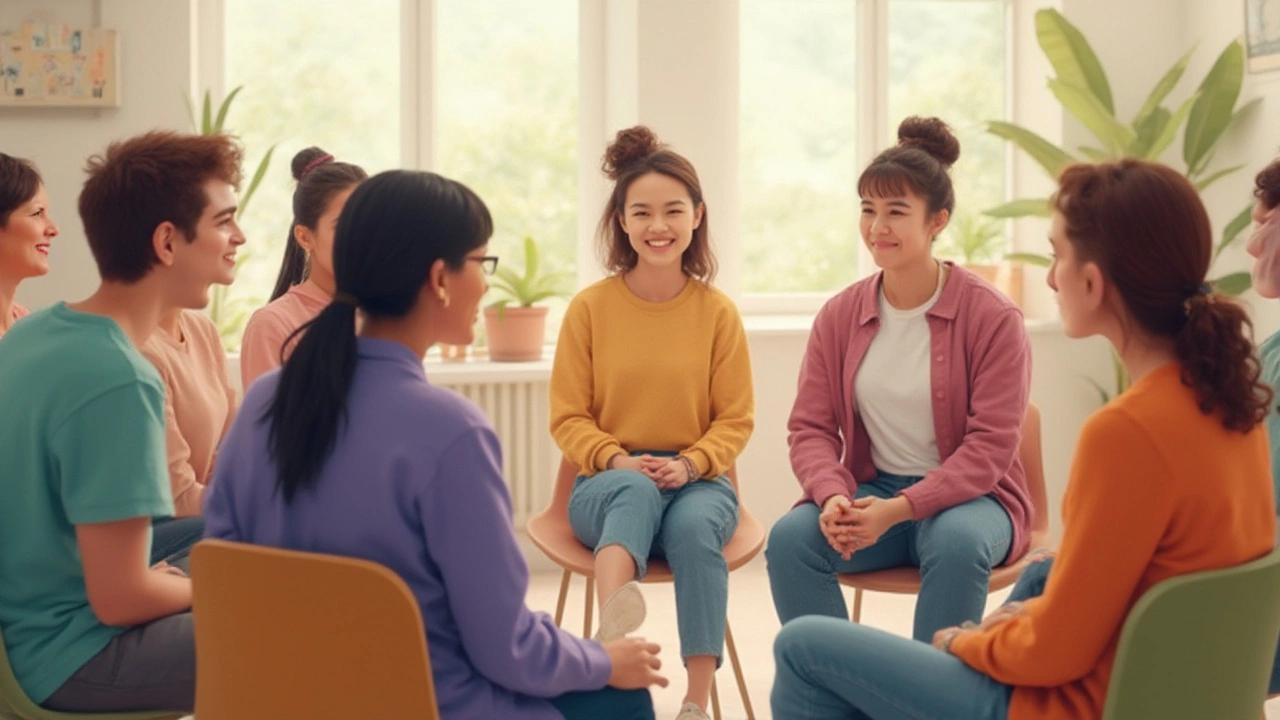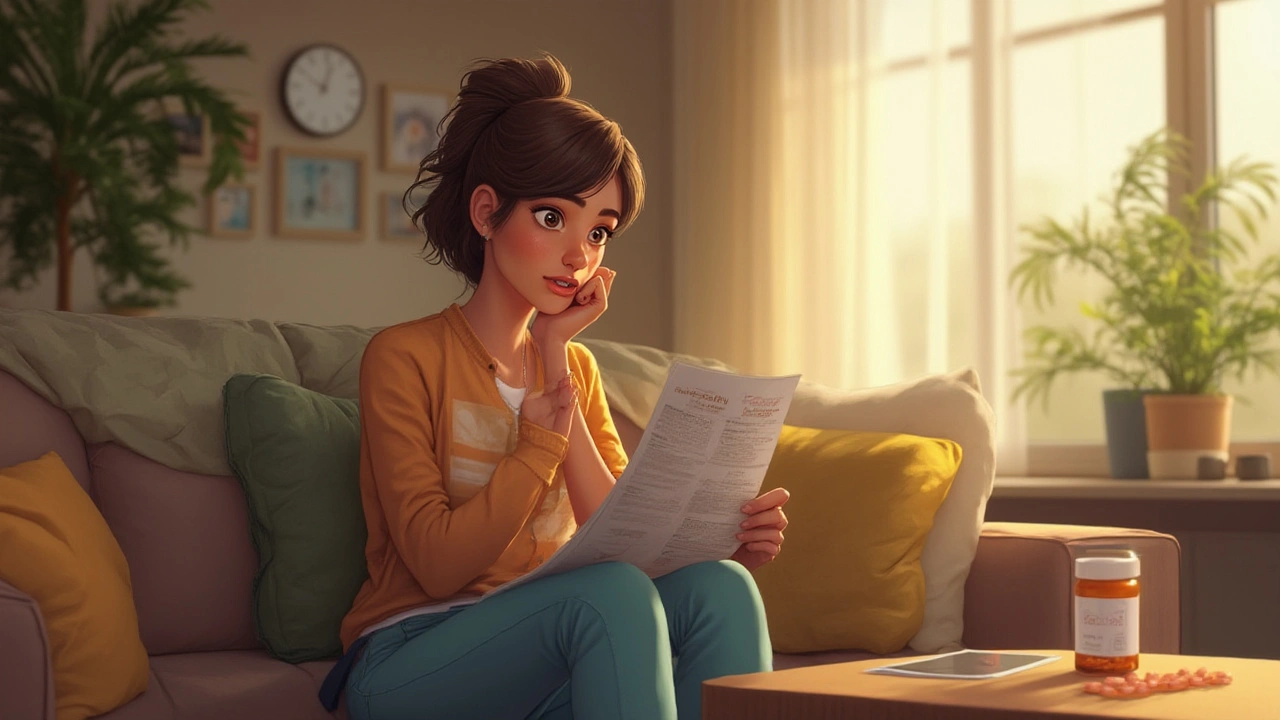Psych meds have a reputation: they can be life-changing, but they’re often misunderstood. Loxitane, or loxapine, might sound like just another name from a list of hard-to-pronounce drugs in a psychiatrist’s office, but it holds a story worth telling. Imagine being prescribed something that’s as old as disco but still trusted by doctors today—there’s a reason for that. Loxitane has been around since the 1970s, outlasting countless “miracle” drugs that fizzled out over time. It was once a blockbuster medication, especially for people living with stubborn schizophrenia symptoms, so if you’ve never heard of it, you’re not alone—but a lot of people have quietly relied on it for decades. The biggest twist? Even as medicine races forward, Loxitane clings to relevance, still prescribed when modern options stumble.
What Is Loxitane and How Does It Work?
Loxitane sits in the family of typical antipsychotics. Developed by Hoechst-Roussel in 1975, it’s been FDA-approved for over 40 years. While many antipsychotics now claim to be “atypical” and promise fewer side effects, Loxitane’s formula sticks to the basics, tackling the positive symptoms of schizophrenia (think hallucinations, delusions, agitation) by blocking dopamine receptors in the brain. That little chemical dopamine? It’s crucial for feeling pleasure, motivation, and focus. But when your brain misfires and pumps out too much, chaos follows—confused thinking, paranoia, out-of-control behavior. Loxitane helps turn down the dopamine dial.
What sets Loxitane apart isn’t just its age. Chemically, it’s actually pretty close to the “atypical” crowd; it’s got similarities to clozapine, for example. But in the real world, it gets grouped with classics like haloperidol and chlorpromazine. Average dosage ranges from 10mg to 100mg daily, depending on the person’s needs. Doctors usually start low, watch closely, and bump things up slowly to find the sweet spot. While it comes in capsule, oral concentrate, and even inhalation forms, capsules are most common. For severe agitation, inhaled loxapine (brand: Adasuve) is another option, especially when someone needs to calm down fast but can’t swallow pills.
So, who actually takes this? Nearly all prescriptions are for adults, often those who haven’t found relief with newer meds or who can’t tolerate their side effects. There’s no “one size fits all” with schizophrenia—sometimes older drugs hit just right. It’s also used off-label, sometimes for bipolar disorder, though that’s less common. Unlike many antipsychotics, Loxitane is rarely a first choice, but it’s valued when tried-and-true approaches matter most.
Dosing schedules depend on symptoms and how a person responds. Taking it with food can help with stomach upset, so breakfast and dinner are frequent routines. Missing doses isn’t the end of the world (unless taken right before sleep), but doubling up is a bad plan—too much increases side effect risks. The drug clears out of your system in about 24 hours (half-life is 8 hours on average), but withdrawal effects can linger if you quit cold turkey, so gradual tapering is smart.

Side Effects, Drug Interactions, and What to Watch For
Every medication has its baggage, and Loxitane is no exception. The side effect list isn’t small, but it’s not all doom and gloom—some people tolerate it well for years. Here’s where things get real: the biggest issues are movement disorders, sedation, and the risk of a rare, dangerous condition called neuroleptic malignant syndrome (NMS).
Movement disorders come in several flavors. The classics: dystonia (muscle spasms), parkinsonism (shaky hands, stiff arms), akathisia (restlessness that will not go away), and after months or years, tardive dyskinesia (involuntary facial grimacing or tongue movements). This last one keeps psychiatrists up at night—once it’s there, it’s tough to reverse. Older antipsychotics like Loxitane have a higher risk of these movement troubles compared to modern ‘atypicals.’ Still, for some folks, that’s a manageable trade for peace and clarity.
Sedation is another big one. Loxitane can make people feel sluggish, especially during the first week or two. It’s often taken at night to dodge the daytime drowsiness. On the flip side, too much stimulation (insomnia, anxiety) isn’t common but occasionally pops up. The risk of NMS, while rare (less than 1 in 1,000 people), is a medical emergency—think fever, stiff muscles, wild heart rate swings, confusion. If that happens, skip the ER line and call for help right away.
There are more everyday side effects, too. Dry mouth (keep water on hand), blurry vision, constipation, and increased appetite aren’t shocking in the antipsychotic world. Some people notice weight gain, though less so than with certain other meds like clozapine or olanzapine. The risk for diabetes or cholesterol problems exists but isn’t as pronounced. Dizziness and low blood pressure can happen if you jump up too fast, so move slow.
Check out this quick table for a snapshot:
| Common Side Effect | Estimated Frequency |
|---|---|
| Movement disorders | 10-40% |
| Sleepiness | 30-50% |
| Dry mouth | 10-20% |
| Weight gain | 10-30% |
| Constipation | 5-15% |
| NMS | <1% |
Mixing Loxitane with other drugs gets complicated. Benzodiazepines (like Ativan or Xanax) can boost sedation and potentially slow breathing. Combining with other antipsychotics increases movement disorder risks. Mixing with antihistamines, sleeping pills, alcohol, or opioids ramps up drowsiness—sometimes dangerously so. Blood pressure meds and drugs with anticholinergic effects (such as some cold meds) can make side effects worse. Grapefruit juice is safe (unlike with some meds), but big changes in routine—like suddenly stopping caffeine or trying a detox diet—can throw things off balance.
People with a history of heart problems, seizures, glaucoma, or urinary troubles need extra caution. Loxitane isn’t approved for treating dementia-related behaviors in older adults; actually, all antipsychotics carry a higher stroke and death risk in this group. If you’re pregnant or breastfeeding, the risk/benefit talk gets serious—animal studies showed some risk for birth defects, so it usually gets avoided unless absolutely needed. Always loop your doctor in before starting or stopping anything, since withdrawal can be rough: nausea, sleep trouble, return of old symptoms.
Practical tip: Get a yearly movement disorder screening and have your doctor check cholesterol, glucose, and blood pressure every few visits. If you ever get a new tremor, fever, muscle pain, or a sudden change in how you feel, talk to your doctor right away. And remember, you can always ask your pharmacist for a rundown on drug interactions. They’ve seen it all before.

Advice for Patients, Caregivers, and What the Future Holds
Getting a prescription for Loxitane can feel overwhelming. After all, no one expects to end up taking a medication as strong as an antipsychotic unless things aren’t going so well. For people with schizophrenia, though, it can mark the beginning of better days: more clarity, less chaos. But it’s not a quick fix or a “magic bullet.” Success with this drug usually means sticking to a routine—missed doses can give symptoms room to sneak back in. If you ever wonder “is it even helping?” try tracking your sleep, mood, and the frequency of those hard-to-control thoughts. Small improvements might sneak up slowly, week by week.
Caregivers are the unsung heroes of every long-term treatment plan. Keeping tabs on behavior shifts, supporting routines, and reminding about doctor visits can make a huge difference. If someone starts getting more withdrawn, agitated, or confused, flag it fast—sometimes side effects or hidden infections can make psychiatric symptoms worse. Don’t skip lab appointments, and never play “DIY doctor” by changing medication doses on your own.
Loxitane rarely makes headlines, but it’s quietly weathered the storm of psychiatric innovation. In the last two decades, so-called second-generation antipsychotics (SGAs) stole the spotlight, with promises of fewer movement disorders and better results. Drugs like risperidone, olanzapine, and aripiprazole have become household names in psychiatric wards and mental health clinics. Yet, every few years, a study pops up to remind us: some stubborn cases respond best to a classic like Loxitane, especially where aggression or agitation dominate the clinical picture. A French study from 2015, for example, found loxapine outperformed some SGAs in calming aggressive patients during emergencies.
The inhaled version, Adasuve, is an interesting new chapter here. It lets clinicians calm severe agitation in 10 minutes flat, avoiding needles or sedative cocktails. Insurance coverage for this new method can be tricky and not every hospital stocks it, but for those who’ve tried everything, it’s a real lifeline.
Pills are only part of feeling better. Medication works best with regular sleep, healthy food, and keeping social ties intact (even when that feels tough). If side effects get in the way of real life, don’t just tough it out—sometimes adjusting the dose or time of day can help, or another med can even out the bumps. And if you need practical tips for daily life with Loxitane? Try these:
- Take it at the same time daily, ideally after a meal.
- Keep a journal of mood and side effects—this helps your doctor fine-tune things.
- Don’t drive, operate machinery, or sign legal papers right after starting or changing the dose.
- If constipation strikes, drink more water, and eat more fiber-rich foods.
- Use reminders or a pill case—antipsychotics only work when you take them regularly.
- Don’t mix with alcohol and take it easy on sedating over-the-counter stuff (those “PM” pain relievers).
- Report any new tremors or involuntary movements asap.
Loxitane’s future looks steady but humble. While newer drugs keep arriving, some patients just do better with the older, proven option. Demand has dropped since the 1990s but has never disappeared—think of it as the vinyl of the psychiatry world: old-school, but with a small crowd of die-hard fans who swear it’s the real thing. The message? Never underestimate the classics when it comes to complicated minds.


Comments (7)
Sarah McCabe July 16 2025
Been on Loxitane for 8 years now 🤘. My hands don’t shake anymore, I can actually hold a cup of tea without spilling it. The drowsiness? Yeah, I take it at night. The dry mouth? I keep a water bottle taped to my keyboard. Worth it. People act like old meds are ‘primitive’-nah, they’re just the grandmas who still know how to fix your leaky faucet.
King Splinter July 16 2025
Look, I get that people romanticize these old-school antipsychotics like they’re some kind of vinyl record from 1977 that ‘has soul’-but let’s be real. Loxitane is basically the psychiatric equivalent of a CRT TV. Sure, it works, but why are we still using it when we’ve got OLED screens now? I’ve seen patients on this stuff so sedated they forget their own birthday. And don’t even get me started on the dystonia. I once watched a guy’s neck twist sideways like he was trying to lick his own shoulder blade. That’s not treatment, that’s a sideshow. Modern meds don’t turn you into a human statue. Why are we still clinging to this relic? Tradition? Fear of change? Or just lazy doctors who don’t wanna bother learning new protocols?
Kristy Sanchez July 17 2025
Oh sweet mercy, another post pretending Loxitane is some noble warrior of psychopharmacology. Let’s not forget it’s basically dopamine duct tape. You’re not ‘finding peace’-you’re just numbing the storm so hard you forget what the sky looked like before the hurricane. And yes, it works. But at what cost? You trade your spontaneity for stability, your laughter for silence, your soul’s static for a quiet hum. And then you wake up five years later wondering why you haven’t danced in public since 2012. Oh wait-you’re too stiff. Tardive dyskinesia doesn’t care about your ‘journey.’ It just dances for you, uninvited. 💀
Michael Friend July 19 2025
Loxitane is the reason we need better regulation. It’s not ‘trusted by doctors’-it’s just the one that’s been around long enough that no one bothered to phase it out. The side effect profile is a nightmare. Movement disorders? 40%? That’s not a treatment, that’s a gamble with your motor control. And NMS? You’re telling me we’re still okay with a drug that can kill you if you get a fever while on it? This isn’t medicine. This is Russian roulette with a prescription pad. And don’t even get me started on how they market this as ‘a last resort’-last resort? No, it’s the default because insurance won’t cover the newer stuff. It’s not about efficacy. It’s about cost. And that’s disgusting.
Jerrod Davis July 20 2025
It is imperative to underscore that the pharmacokinetic profile of loxapine, while exhibiting a half-life of approximately eight hours, necessitates vigilant monitoring for potential extrapyramidal symptoms, particularly in geriatric populations. The prevalence of tardive dyskinesia, as referenced in the literature, remains a significant clinical concern, and thus, the utilization of this agent should be predicated upon a comprehensive risk-benefit analysis, with regular reassessment of therapeutic necessity. The utilization of older antipsychotics in contemporary practice warrants caution, given the availability of pharmacologically superior alternatives with improved tolerability profiles.
Dominic Fuchs July 21 2025
My cousin took this for 12 years. She stopped last year and now she paints again. She says the meds didn’t silence the voices so much as mute her colors. I don’t know if Loxitane saved her or just made her quiet enough for the world to stop worrying. Either way she’s alive. And that’s something. Still… I wish we had better tools. We keep using the same hammer because it’s in the toolbox. Not because it’s the right tool. But hey at least it doesn’t cost $1000 a month. 🤷♂️
Asbury (Ash) Taylor July 21 2025
Thank you for sharing this nuanced perspective on Loxitane. It is critical to recognize that while newer agents offer improved side effect profiles, many individuals derive sustained therapeutic benefit from established pharmacotherapies like loxapine. The key lies in individualized treatment planning, patient education, and close longitudinal monitoring. For those who have achieved stability, discontinuation can pose significant risk. We must avoid the trap of equating ‘new’ with ‘better’-especially in complex psychiatric conditions where consistency and familiarity can be therapeutic in themselves. Continued research and compassionate clinical judgment remain paramount.